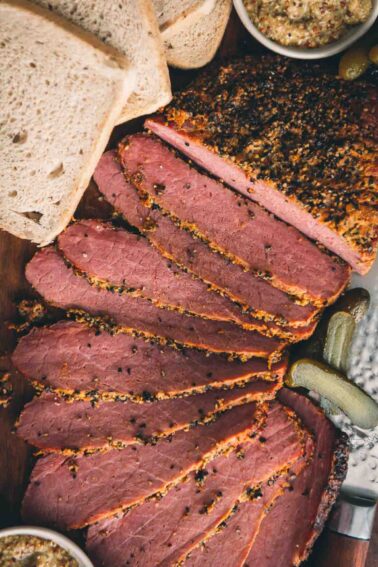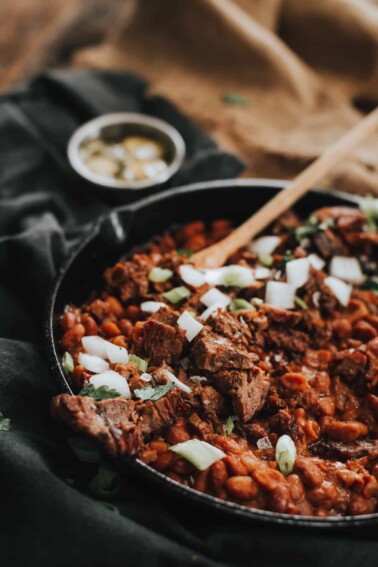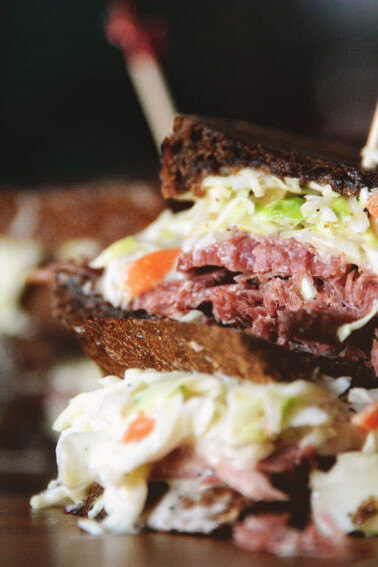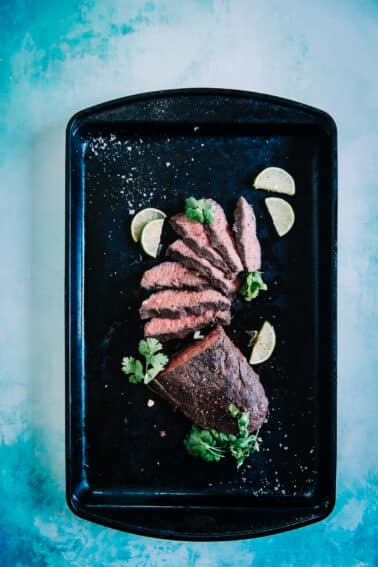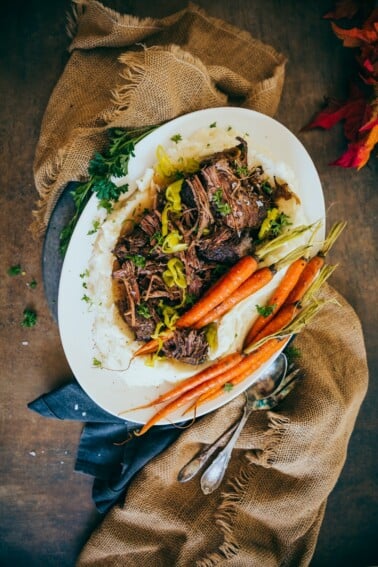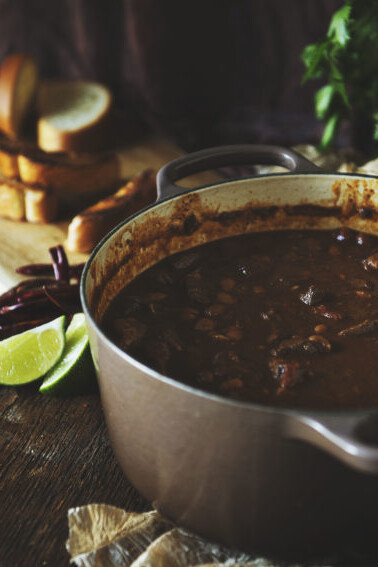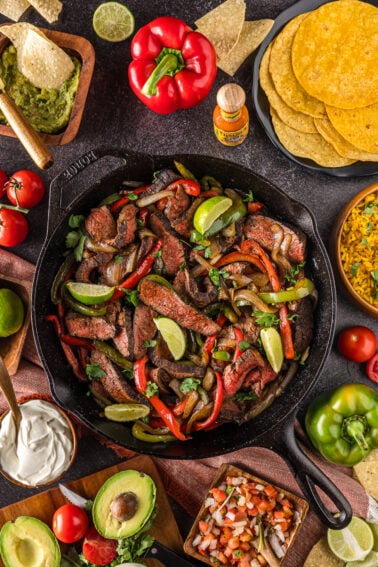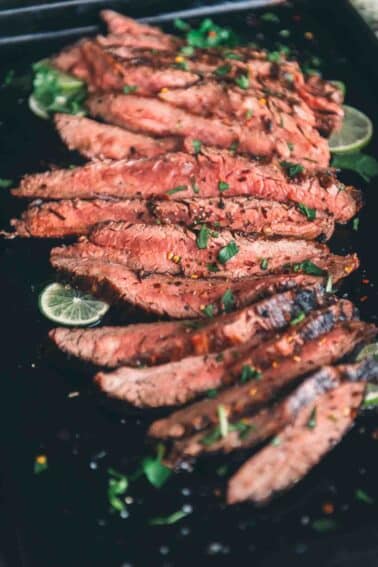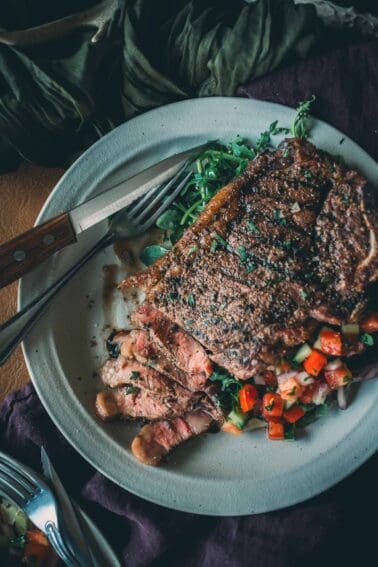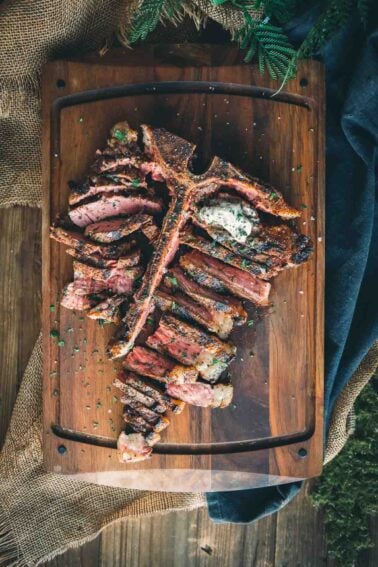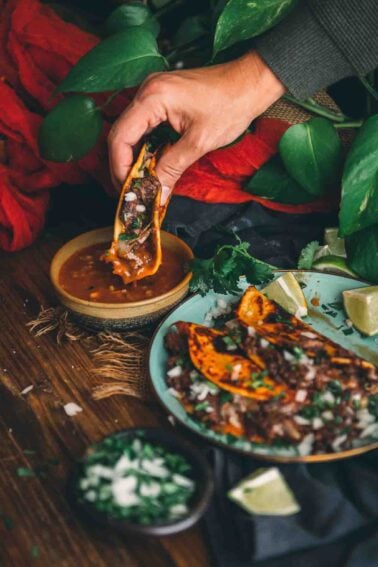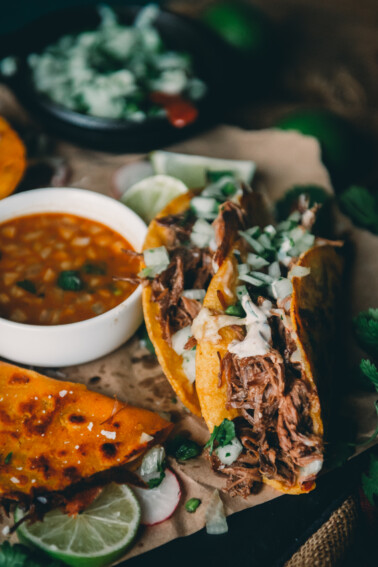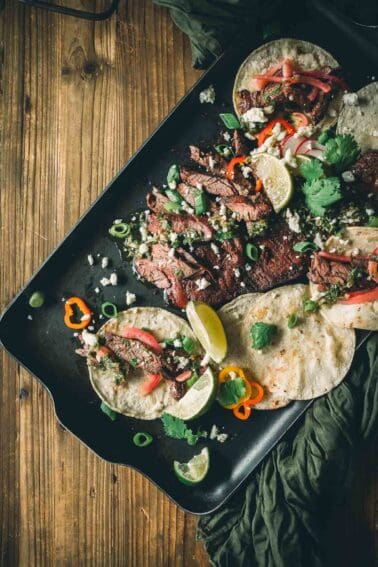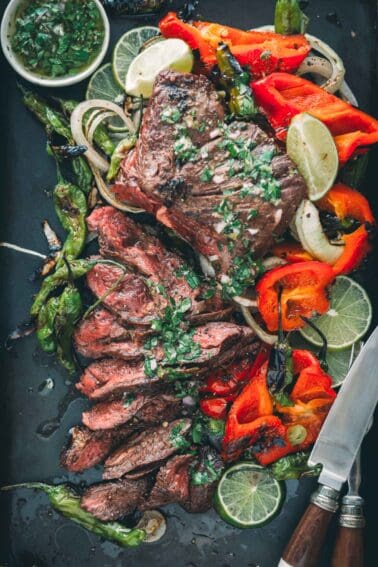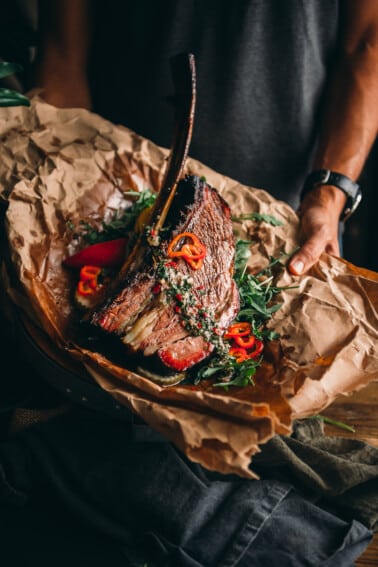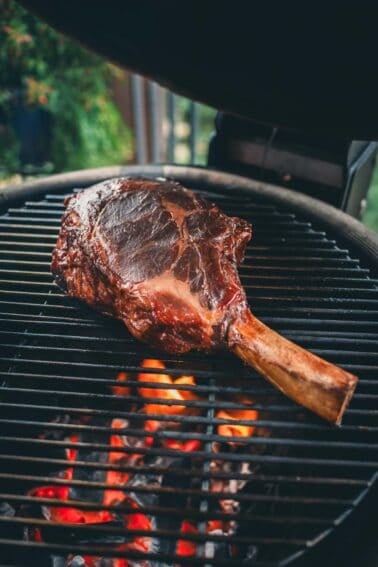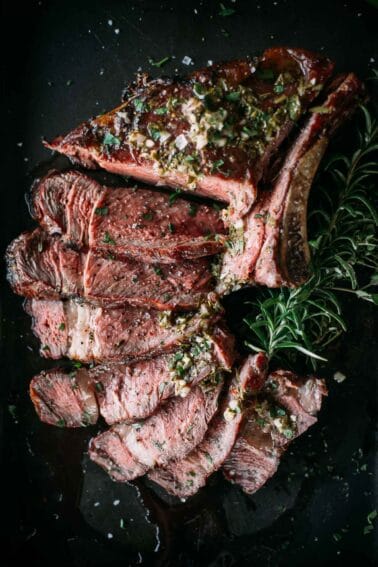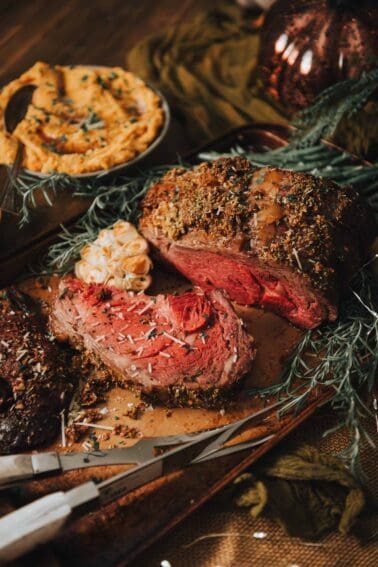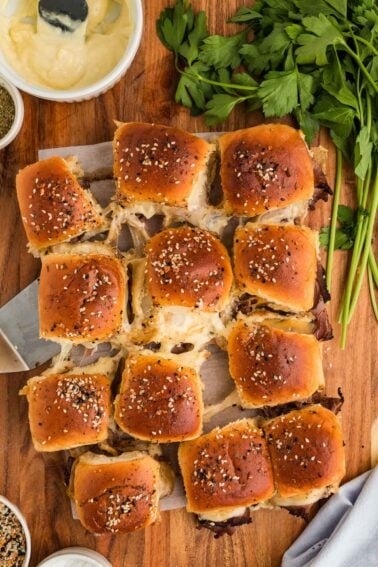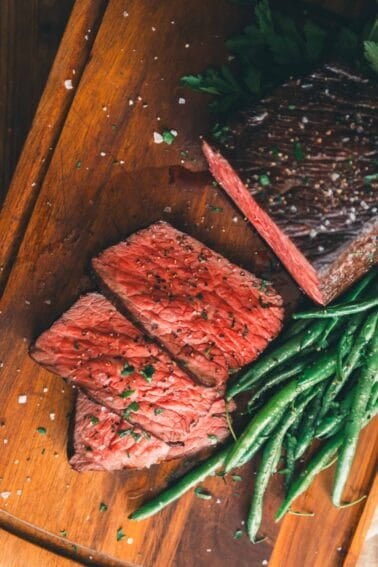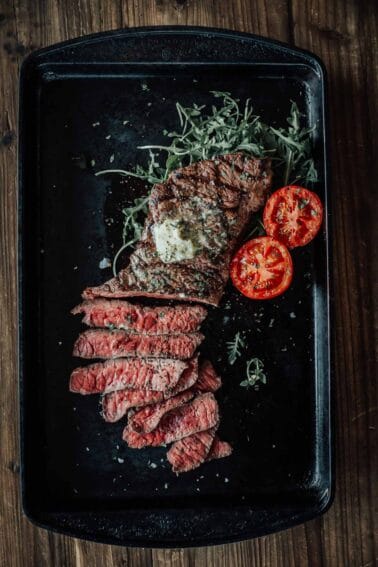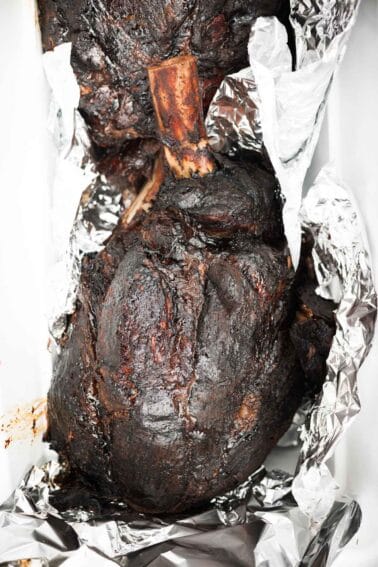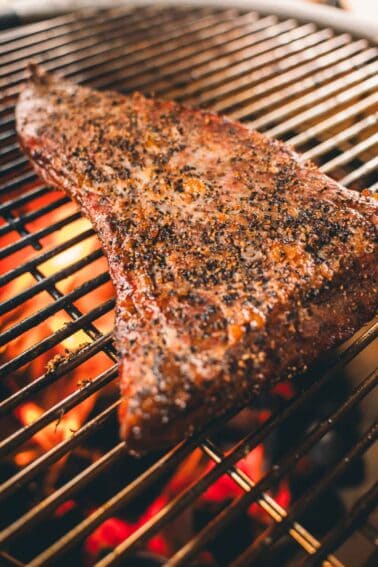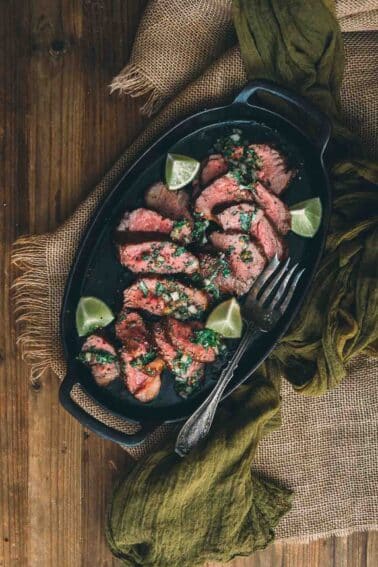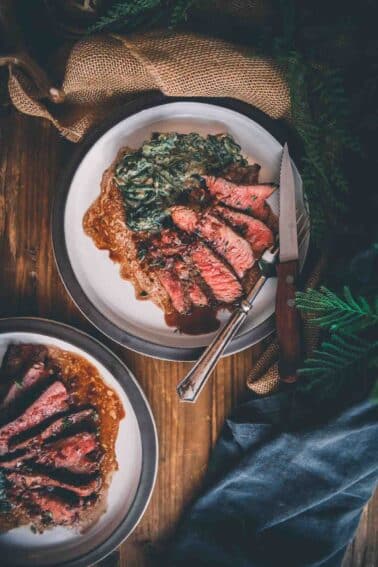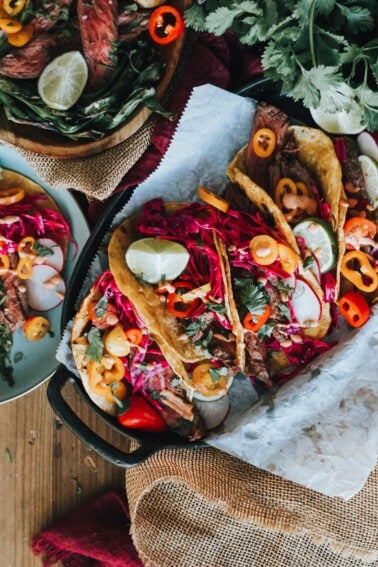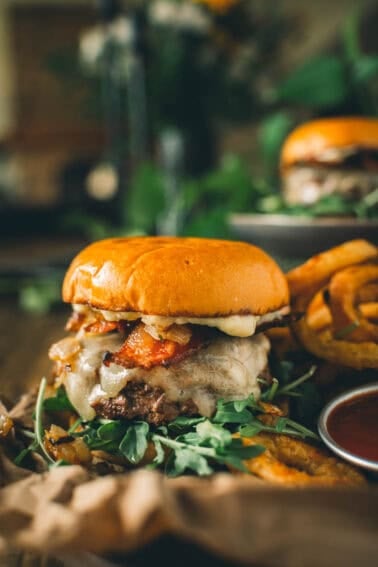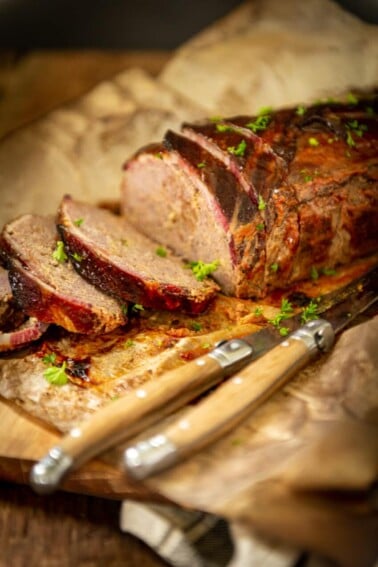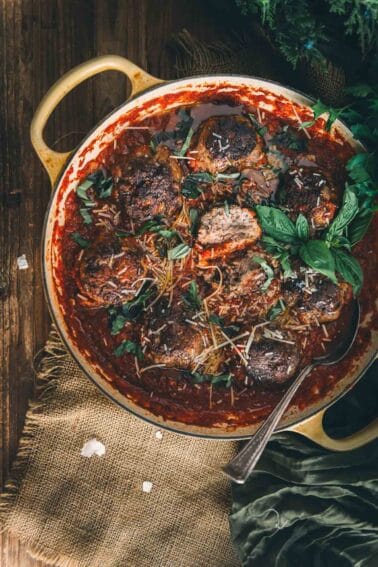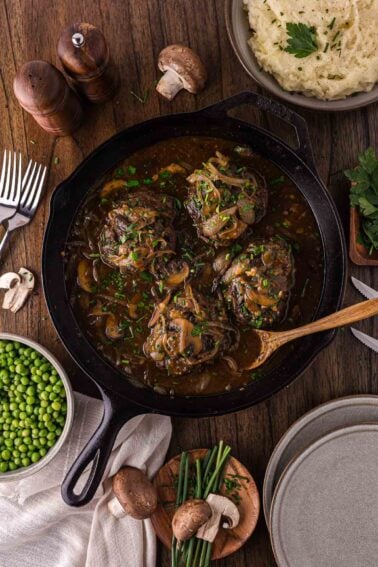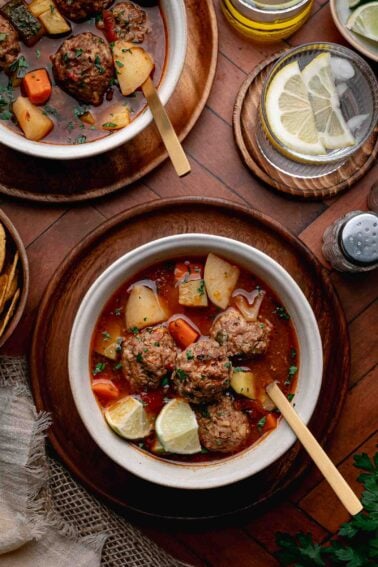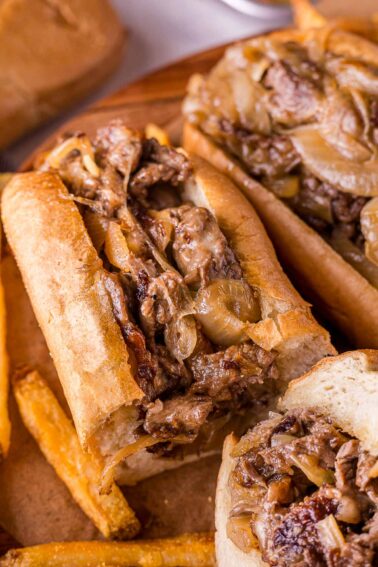Ever stood at the meat counter, overwhelmed by choices and unsure which cut to pick? You’re not alone. Beef cuts can be a maze, but we’re here to be your guide.
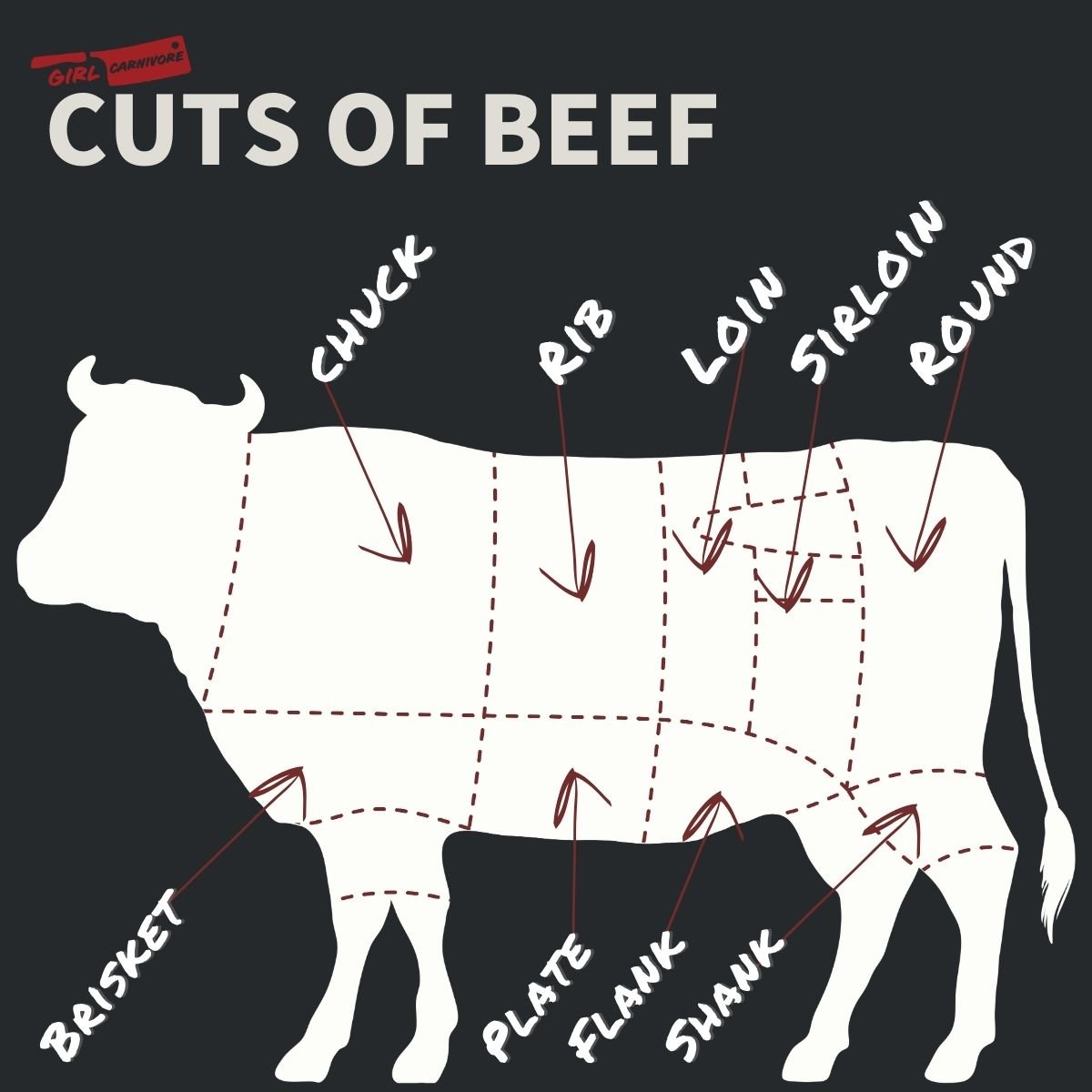
Table of Contents
We’ve all been there – overwhelmed at the market, in sticker shock, and not wanting to buy the wrong cut. Ribeye? Flank steak? Besides the major cuts we see all the time, what in the world’s the difference?
From melt-in-your-mouth filet mignon to bold, flavorful brisket, each cut of beef is a world of potential waiting to be unlocked. In this no-nonsense guide, we’ll break down every major beef primal and their sub-cuts in plain English. No fancy chef lingo here – just straightforward explanations of what makes each cut unique and how to cook it to perfection.
We’ll walk you through the entire cow, sharing our tried-and-true cooking methods and favorite beef recipes. Whether you’re firing up the grill, slow-roasting, or braising, we’ve got you covered. By the end, you’ll navigate the meat aisle with confidence, ready to turn any cut into a mouthwatering meal.
Cuts of Beef
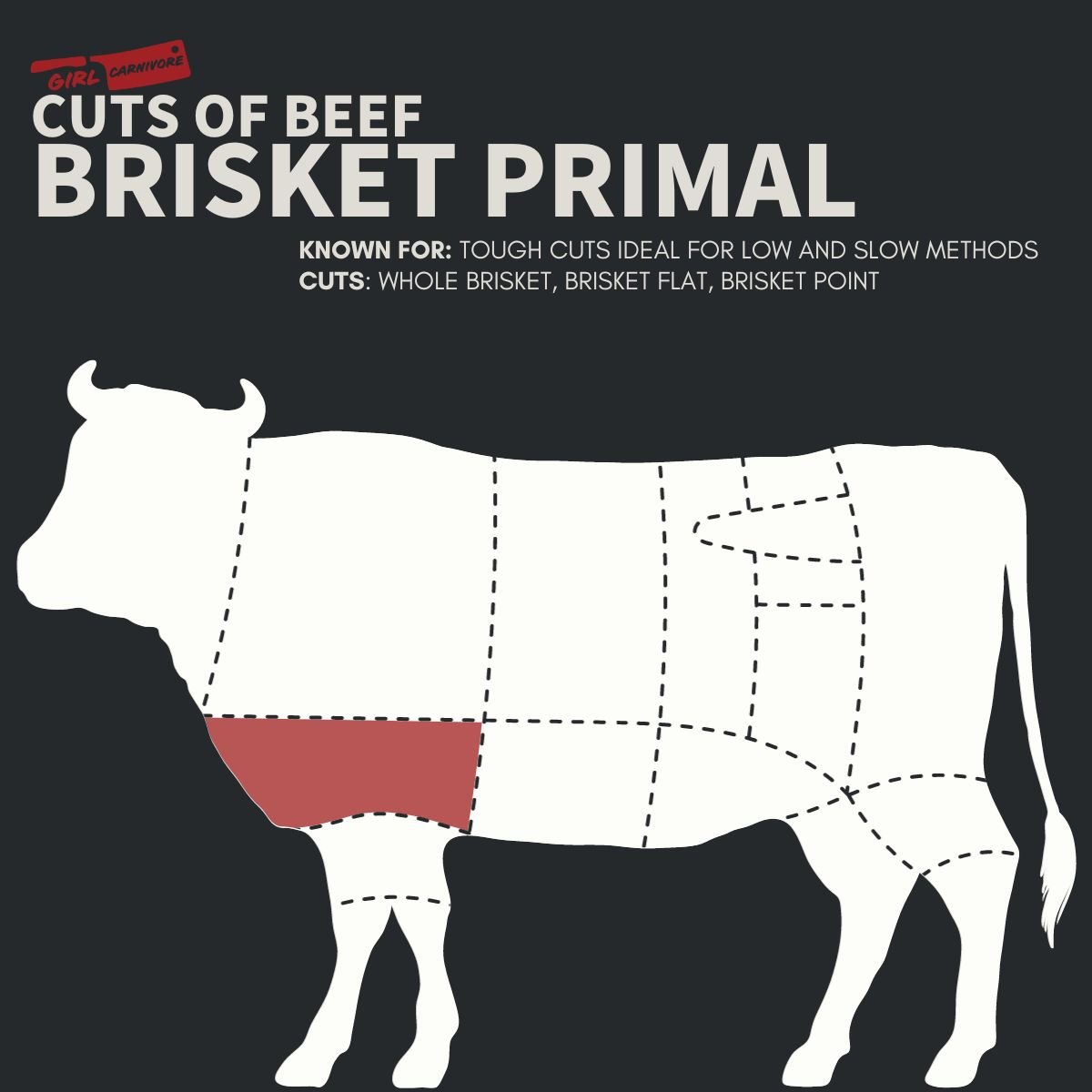
Brisket
- Location: Brisket comes from the breast area of the cow, specifically the pectoralis muscles. This hard working muscle group supports the entire front end of the animal, resulting in a significant amount of connective tissue.
- Best for: Slow cooking methods are your best friend here. Braising or smoking are ideal for brisket due to the connective tissue. Low and slow allows this connective tissue to slowly melt down, transforming into rich, flavorful fat that keeps the meat incredibly moist and tender. Brisket is the king cut for dishes like smoked pastrami, smoked corned beef, and Dutch oven pot roast.
- Tips:
- Brisket benefits from marinades to enhance tenderness and add additional flavors. Look for a well-marbled cut, as the intramuscular fat (fat pockets within the muscle) adds flavor and helps baste the meat from within during long cooking times. A well-marbled brisket will give you a more flavorful and juicy end result.
Brisket Sub-primal Cuts
- Brisket Flat: This is the thinner portion at the posterior end. While flavorful, it can be drier due to its leanness.
- Brisket Point: The thicker, fattier end of the brisket. It boasts more marbling for better moisture retention, but the abundant connective tissue requires slow cooking methods to become tender.
Brisket Recipes
Beef Recipes
Smoked Corned Beef
Beef Recipes
Easy Smoked Pastrami
GC Original
Brisket BBQ Beans
Beef Recipes
Corned Beef Sandwich
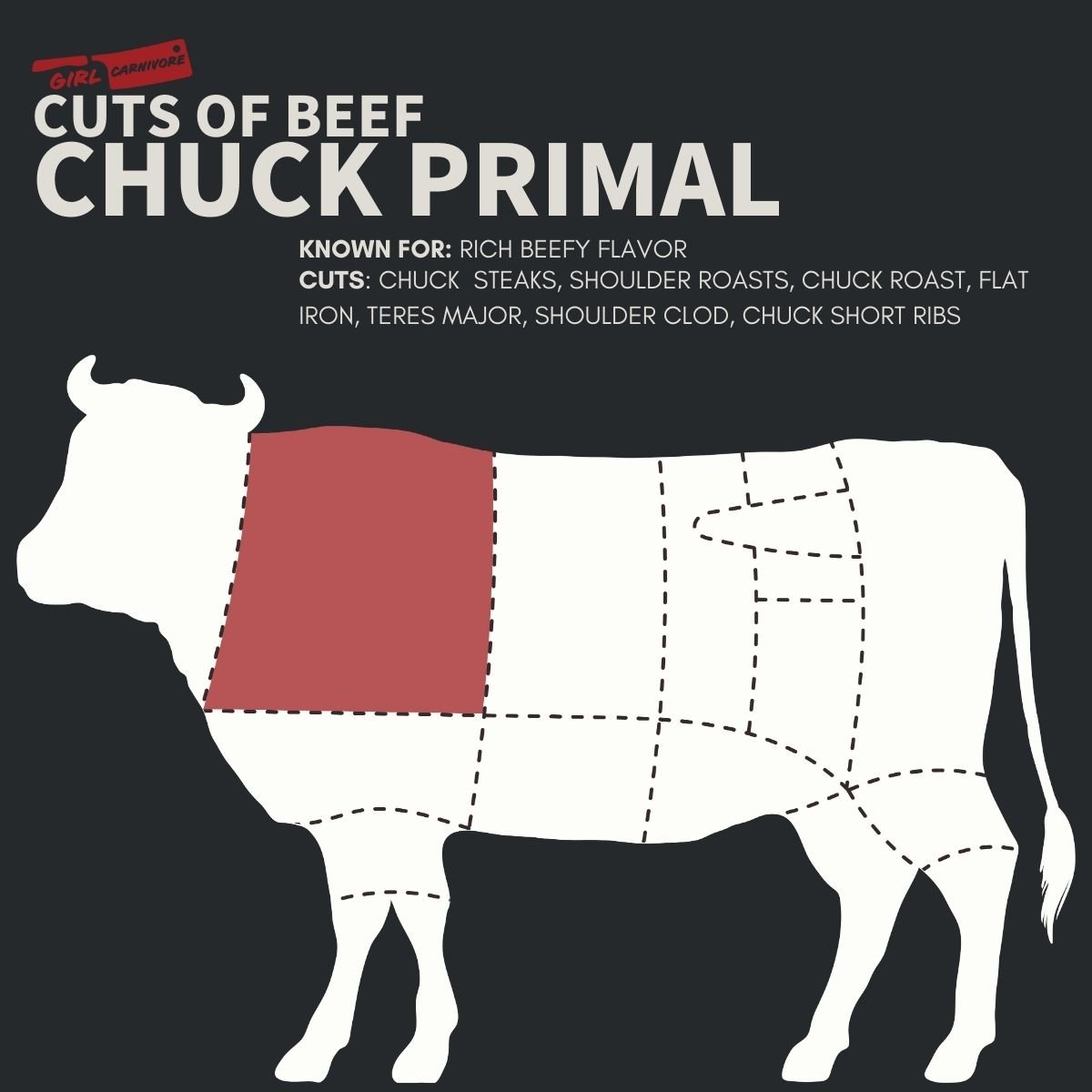
Chuck
- Location: Chuck comes from the shoulder area of the cow, encompassing a large group of muscles responsible for movement and stability of the front leg. This hardworking area consists of a good amount of muscle tissue interwoven with connective tissue.
- Best for: Chuck is a two-in-one cut! Due to the presence of both muscle and connective tissue, chuck can be enjoyed in two ways. Chuck roasts benefit from slow cooking methods like pot roasting or braising, allowing the connective tissue to break down and render, resulting in a flavorful and tender roast. The other half of the chuck story is ground beef. Chuck is a leaner option for grinding compared to other cuts like ribeye but still delivers rich beefy flavor in burgers, meatballs, or bolognese sauce.
- Tips:
- You can trim the excess fat off chuck roasts for a leaner result, but some marbling is recommended for optimal flavor.
- For ground chuck, look for a good balance of fat content. Too lean and your burgers might end up dry, while too much fat can make them greasy. We look for a 70/30 ratio for amazing burgers.
Chuck Sub-primal Cuts
- Chuck Steaks: Most chuck steaks benefit from slow cooking methods like braising or stewing to break down connective tissue and achieve tenderness. We also love using the sous vide method for cooking chuck steak, like our sous vide chuck steak recipe.
- Shoulder Roasts: Similar to chuck steaks, these large roasts require slow cooking to prevent dryness and make the meat fork-tender. We love making a smoked chuck roast when we want tender pulled beef.
- Chuck Eye Steak: Many call the chuck eye steak as the “poor man’s ribeye” for a reason. Located on the shoulder of the cow, near the more expensive ribeye, it offers a good balance of affordability and flavor.
- Denver Steak: Hailing from the shoulder, this marbled beauty offers ribeye-like flavor at a friendlier price. Perfect for grilling or pan-searing, like our pan seared Denver steak.
- Flat Iron Steak: This steak is known for its deep rich flavor. Short of getting your hands on a butcher’s cut like the teres major, this is your best bet if you want an exceptional taste. It’s perfect for hot and dry cooking methods like grilling or sous vide flat iron for a perfect medium center.
- Ranch Steak: Bold beefy flavor from the chuck. Leaner and chewier, it shines with marinades and slow cooking for delicious shredded beef.
- Teres Major Steak: A thin, flavorful shoulder steak. Quick cooking (grilling, pan-searing) is key to prevent dryness. Marinades recommended.
- Sierra Steak: The Sierra steak is a budget-friendly chuck cut with bold flavor. Similar to flank steak, it benefits from marinades or slow cooking for tenderness. Thin cuts can be grilled or pan-seared for a juicy result, but remember to slice thinly against the grain for the best texture.
- Blade Steak: Blade steak, a budget-friendly cut from the chuck near the shoulder, packs a beefy punch. While sometimes chewy, slow cooking or marinades unlock its tenderness, making it perfect for stews, fajitas, or pan searing, like pan seared blade steaks.
Chuck Recipes
Beef Recipes
Smoked Chuck Roast
Beef Recipes
Grilled Flat Iron Steak
Beef Recipes
Instant Pot Mississippi Pot Roast
Beef Recipes
Dutch Oven Chili in Oven
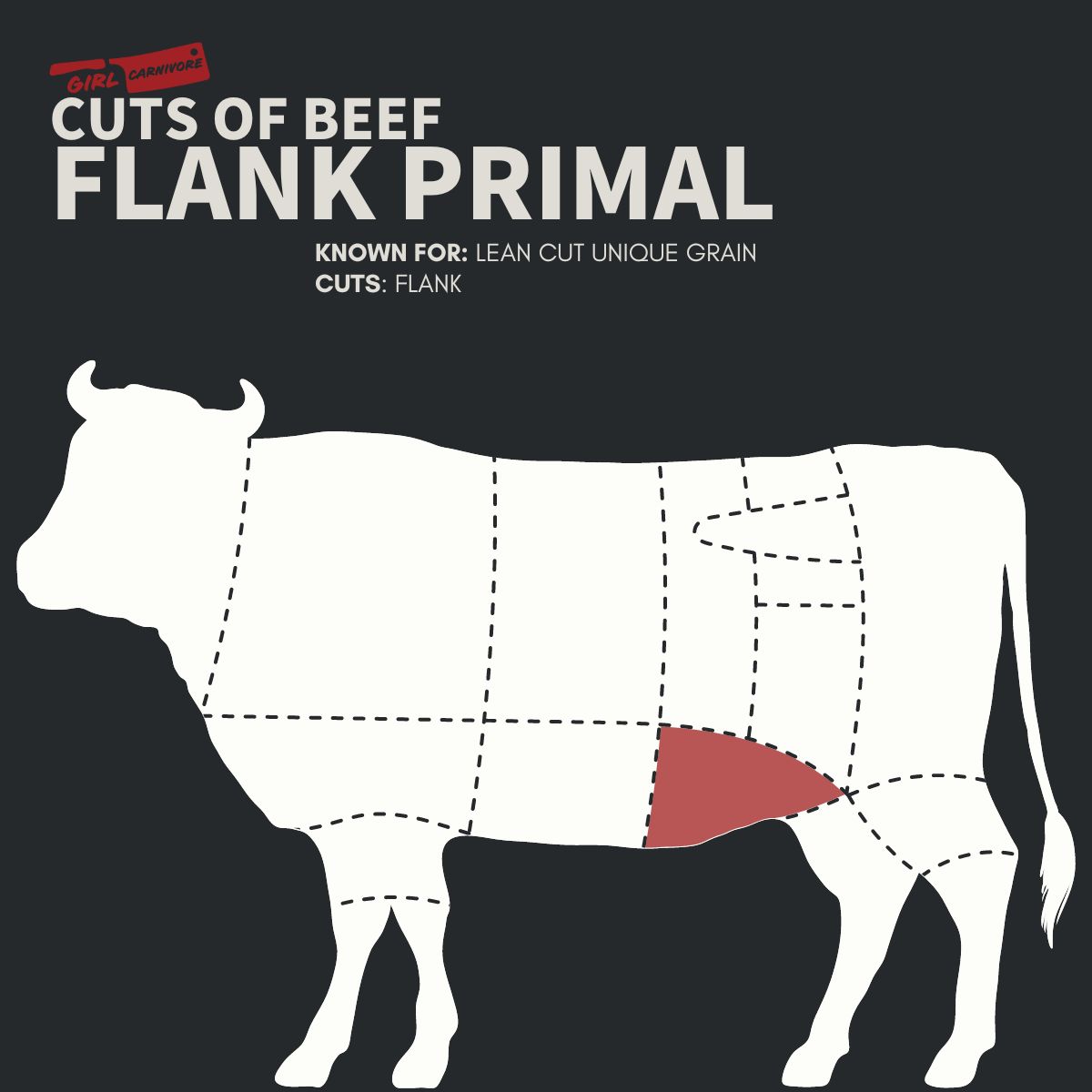
Flank
- Location: The flank comes from the abdominal muscles of the cow, running along the underside from the rib cage to the hind leg. Unlike the muscles that perform slow and steady movements, the flank muscles are responsible for rapid flexion, resulting in a long, thin cut with a coarse grain.
- Best for: Flank steak thrives on high-heat cooking methods that quickly sear the exterior while keeping the interior juicy. Some great options for cooking flank steak are grilled flank steak, grilled flank steak tacos, and grilled flank steak fajitas. The key to enjoying flank steak is in the cut. Due to the coarse grain, it’s crucial to slice the steak thinly against the grain. This guarantees each bite is tender and flavorful.
- Tips:
- Flank steak benefits from marinades. A flank steak marinade adds flavor and tenderizes the muscle fibers, making the final product even more enjoyable.
- When slicing flank steak, remember to go against the grain! This shortens the muscle fibers and creates a more pleasurable eating experience.
Flank Recipes
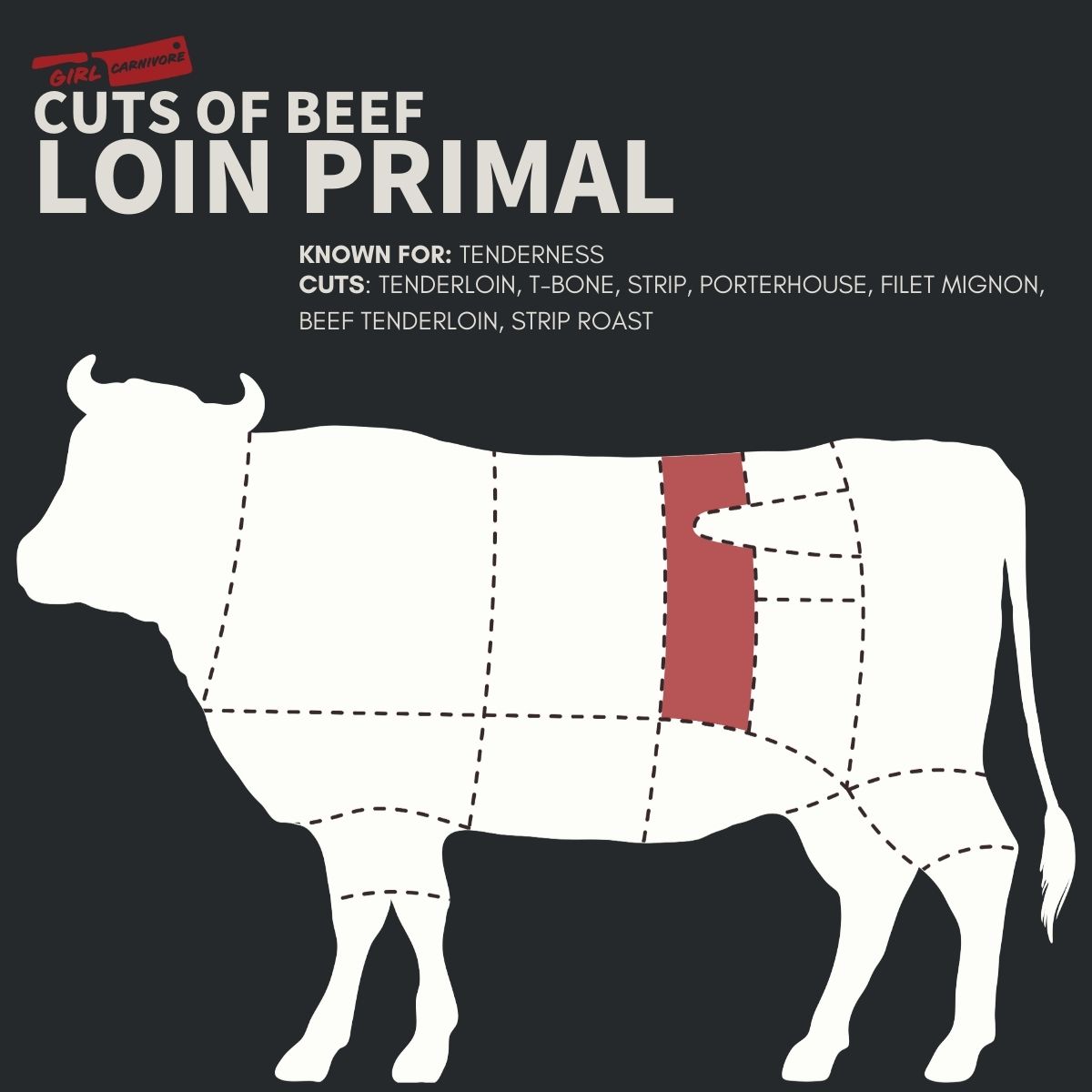
Loin
- Location: The loin section of a cow is a prized area located along the back, just behind the rib cage. These muscles perform minimal work supporting the animal’s weight, resulting in some of the most tender cuts of meat.
- Best for: Loin cuts are ideal for dry-heat cooking methods such as grilling, roasting, and pan-searing. The tenderness of these cuts makes them perfect for quick-cooking techniques that preserve their natural juiciness and flavor.
- Tips:
- Due to their tenderness, loin cuts can easily become overcooked. Use a meat thermometer to make sure you reach the desired steak temp without overcooking.
- Let loin cuts rest for 5-10 minutes after cooking to allow the juices to redistribute throughout the meat.
- For maximum flavor, season loin cuts generously with salt and pepper before cooking.
- When slicing loin cuts, especially for steaks like New York Strip or Porterhouse, cut against the grain for the most tender bite.
Loin Sub-primal Cuts and Secondary Cuts
- Tenderloin: As the name suggests, this cut from the short loin is the king of tenderness. It’s a lean muscle with a mild flavor, best enjoyed cooked medium-rare. Here are some of our favorite beef tenderloin recipes – grilled beef tenderloin, roast beef tenderloin, sous vide beef tenderloin, and smoked beef tenderloin.
- New York Strip Steak: A crowd-pleaser with a great balance of tenderness and rich beefy flavor, ideal for grilling, roasting, or pan-searing, like our pan seared New York strip steaks.
- Kansas City Strip Steak: Often called a bone-in New York Strip, this cut comes from the short loin with the tenderloin still attached to a T-shaped bone. It offers a taste of both worlds: the tenderness of the tenderloin and the rich flavor of the New York Strip.
- Filet Mignon: Filet mignon is the undisputed king of tenderness, a small cut from the cow’s tenderloin known for its melt-in-your-mouth texture and subtle beef flavor. Perfect for quick grilling or pan-searing to avoid drying out this tender treat. For an extra layer of decadence, we make bacon-wrapped filet mignon for a hint of smoky flavor and fat. We also love a low and slow sous vide filet mignon for perfectly cooked filet mignon every time.
- Porterhouse Steak: Similar to a T-bone steak, the porterhouse features a generous portion of tenderloin on one side of the T-shaped bone. However, the key difference lies in the size. A porterhouse boasts a significantly larger tenderloin compared to the T-bone. Perfect for grilling, like our grilled porterhouse steak recipe.
- T-Bone Steak: This crowd-favorite combines tenderness and flavor. One side of the T-shaped bone showcases the tenderloin, while the other features a satisfying portion of the strip loin. One of our favorite ways to use this cut is to make grilled T-bone steak.
- Loin Steak Tail: The narrower end of the tenderloin, often sold as a separate cut. While not as substantial as the center-cut tenderloin, it delivers a similar melt-in-your-mouth texture at a more affordable price point.
Loin Recipes
Beef Recipes
Grilled Strip Steaks
Beef Recipes
Bacon-wrapped Filet Mignon
Beef Recipes
Grilled T-bone Steak
Beef Neck, Tongue, and cheeks
- Location: This might seem like a mystery cut for most home cooks, but the head area of the cow offers a surprising variety of unique eating experiences, mainly the neck, cheeks, and tongue.
- Best for: popular options include beef cheeks, tongue, and a personal favorite, the neck. These cuts are not as common in typical grocery stores, but specialist butchers or ethnic markets might offer them.
- Tips:
- Cuts from the head are a great option for adventurous eaters and offer unique flavors and textures. Slow braising is key to break down the tough muscle fibers.
- Beef cheeks, for example, have a rich, beefy flavor and incredible tenderness due to the presence of gelatinous connective tissue.
- Beef tongue requires a lengthy pre-soaking process to remove any blood and achieve a pleasant texture.
Head Cuts
- Beef cheek: This cut comes from the face of the cow and consists of well-worked muscles. However, slow cooking methods like braising transform the collagen within the cheeks into gelatin, resulting in incredibly tender and flavorful meat. We love making Mexican birria and beef cheek ragu with beef cheek.
- Tongue: A popular cut in many cultures, beef tongue is a lean and flavorful muscle. It requires pre-soaking to remove blood and achieve a pleasant texture. Once prepared, it makes amazing tacos. It can also be enjoyed boiled, roasted, or even sliced for sandwiches.
- Neck: the neck is one of our favorite cuts for braising. A low and slow cook allows the rich, meaty flavor to develop with fork-tender meat perfect for stews and shredded meat.
- Brains: While not for everyone, beef brains are a delicacy in some cuisines. However, careful handling and specific cooking methods are essential due to their delicate nature.
Neck, Tongue, and Cheek Recipes
Beef Recipes
Birria Quesadilla
Beef Recipes
Insta Pot Birria
Beef Recipes
Braised Beef Cheek Ragu
Beef Recipes
Quesabirria Tacos
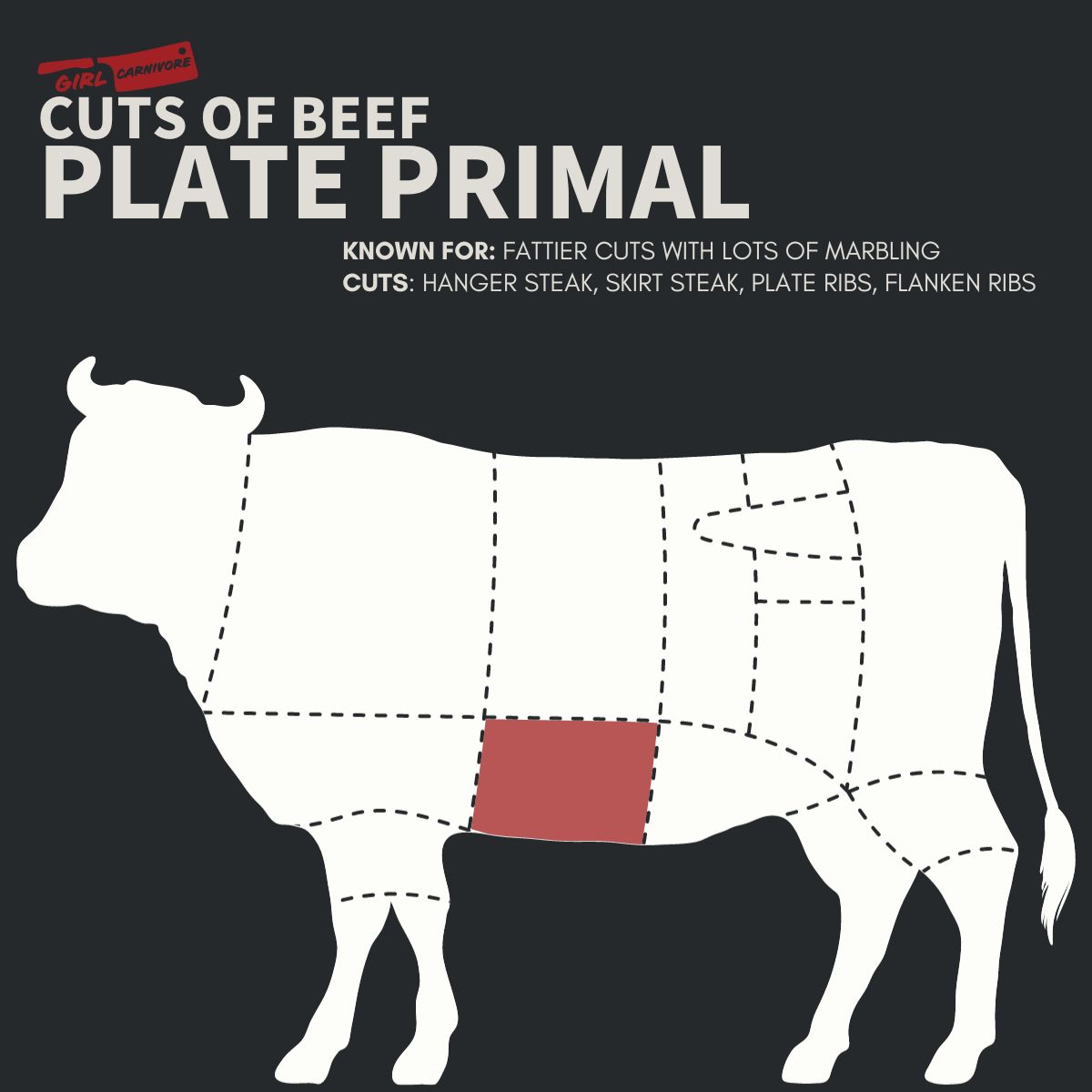
Plate
- Location: The plate comes from the belly area of the cow, encompassing the fatty underside. This area is not burdened with a lot of movement, resulting in a high amount of fat and connective tissue.
- Best for: Slow cooking methods are essential for plate cuts due to the high collagen content. Braising or stewing are perfect applications, allowing the connective tissue to slowly break down and render into flavorful fat. Short ribs are the most popular cut from the plate and are a favorite among slow-cooking enthusiasts.
- Tips:
- Plate short ribs benefit from long, slow cooking times. This allows the collagen to melt, transforming into gelatin that keeps the meat incredibly moist and tender. The resulting short ribs are known for their fall-off-the-bone tenderness and rich beefy flavor, perfect for a comforting stew or a hearty main course.
Plate Sub-primal Cuts
- Skirt Steak: Similar to flank steak but slightly thinner and finer in grain, skirt steak excels in quick cooking applications where its intense beefy flavor shines. Thinly sliced fajitas are a classic example.
- Hanging Tender: Often called the “hanger steak,” this triangular cut is nestled beneath the flank proper. While a bit trickier to find, it boasts exceptional tenderness and rich flavor, making it a favorite among chefs. Perfect for grilling or pan searing, like grilled hanger steak and pan seared hanger steak.
- Plate Short Ribs: Short ribs come in a few variations: “plate” short ribs from the lower rib cage with a higher fat content, perfect for slow cooking or braising for fall-off-the-bone tenderness. Chuck short ribs and beef short ribs from the higher portion, cut from the rib primal, offering a good balance of meat and fat for grilling or braising. We’ve made short ribs in various ways, like smoked short ribs, sous vide short ribs, Korean short ribs, braised short ribs, slow cooker short ribs, and smoked Dino ribs.
Plate Recipes
Beef Recipes
Smoked Beef Short Ribs
Beef Recipes
Grilled Skirt Steak Tacos
Beef Recipes
Grilled Hanger Steak Recipe
Beef Recipes
Smoked Dino Ribs
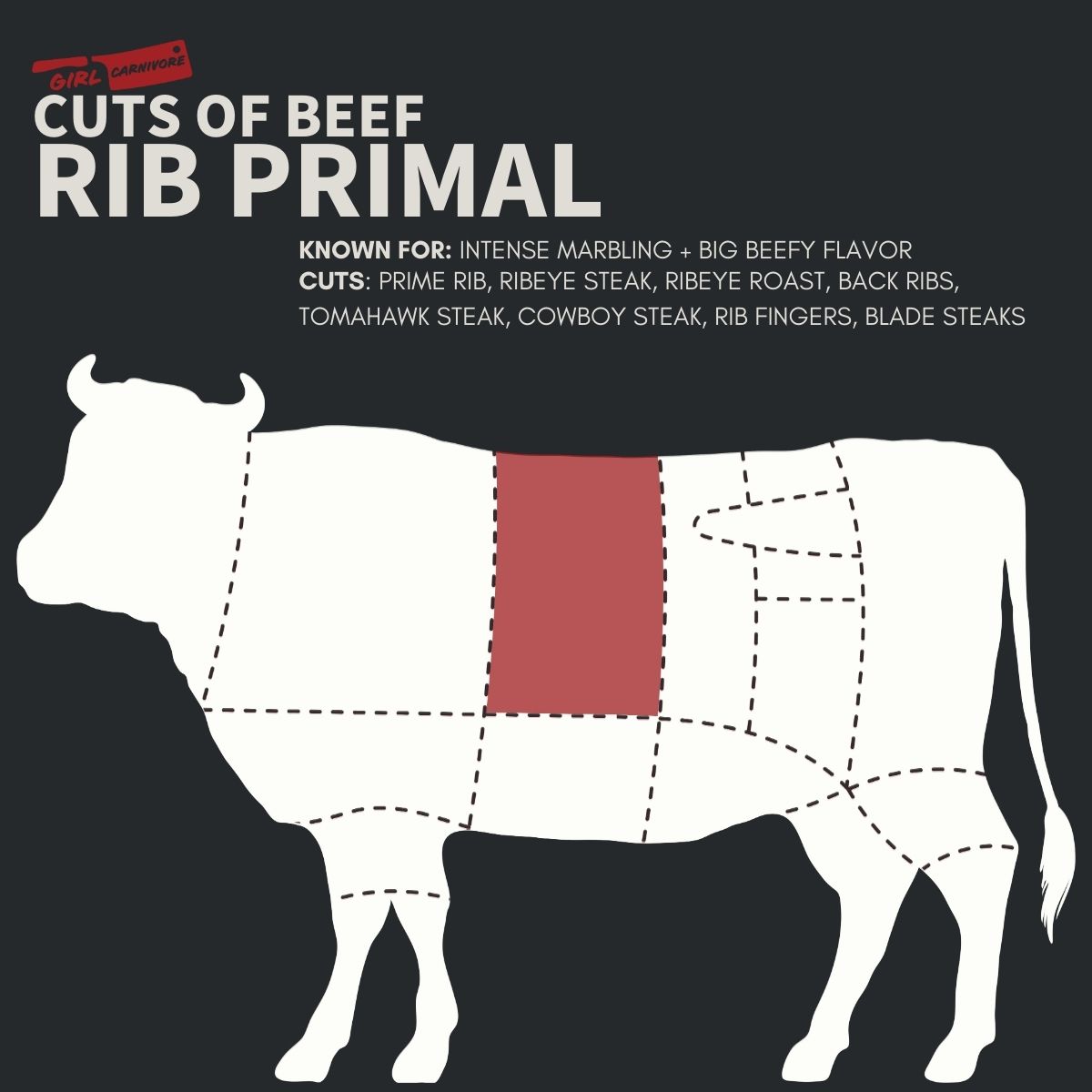
Rib
- Location: The rib primal originates from the rib cage of the cow. These ribs protect the vital organs and provide support for the entire upper body. As a result, rib cuts can contain a good amount of meat alongside varying degrees of marbling and connective tissue.
- Best for: The versatility of rib cuts is impressive. They can be enjoyed grilled, roasted, or even braised, depending on the specific cut.
- Tips:
- Rib cuts are generally known for their rich flavor and marbling.
- Ribeye steaks are a prime example, boasting exceptional juiciness and intense beefy taste due to their well-marbled interior.
- Rib roast is a crowd-pleasing option for larger gatherings, offering a flavorful and impressive centerpiece.
- Consider the specific cut within the rib primal for your desired feast. For individual portions, ribeye steaks shine. For a larger group, a rib roast is a fantastic choice.
- Rib cuts are generally known for their rich flavor and marbling.
Rib Sub-primal Cuts
- Ribeye Steak: The undisputed king ribeye features exceptional marbling throughout, resulting in incredible juiciness and intense beefy flavor. This cut is perfect for grilling, pan-searing, or roasting for a luxurious steak experience. Go bone-in and make grilled bone-in ribeye steaks , or keep it boneless with pan seared ribeye steaks.
- Cowboy Steak: This is essentially a bone-in ribeye steak with a long, frenched rib bone. It’s a showstopper cut known for its impressive size and rich flavor from the marbling. Think of it as a ribeye for those who love a bold statement on the plate.
- Tomahawk Steak: Similar to a cowboy steak, it’s a bone-in ribeye with an exceptionally long, untrimmed rib bone that resembles a tomahawk axe handle. This cut prioritizes visual impact and is perfect for a special occasion. Like the cowboy steak, it boasts a rich flavor from the marbling.
- Prime Rib Roast: A true crowd-pleaser, this impressive roast boasts generous marbling and a large rib bone. Ideal for slow roasting, it delivers a flavorful and showstopping centerpiece for any special occasion. This premium cut works well for tons of recipes, like grilled prime rib, reverse sear prime rib, sous vide prime rib, smoked prime rib, and oven roasted prime rib.
- Back Ribs: Beef back ribs are cut from under the prime rib and offer a budget-friendly option. Enjoy fall-apart tenderness with slow cooking (think tacos!), or juicy results with grilling for thinner cuts.
- Rib Fingers: These thin, finger-like strips are often sold attached to ribeye steaks. While flavorful, they require quick cooking methods like grilling or stir-frying due to their leanness.
Rib Recipes
Beef Recipes
Grilled Cowboy Steak
Beef Recipes
How to Smoke a Ribeye
Beef Recipes
Garlic Herb Prime Rib
Beef Recipes
Sous Vide Ribeye
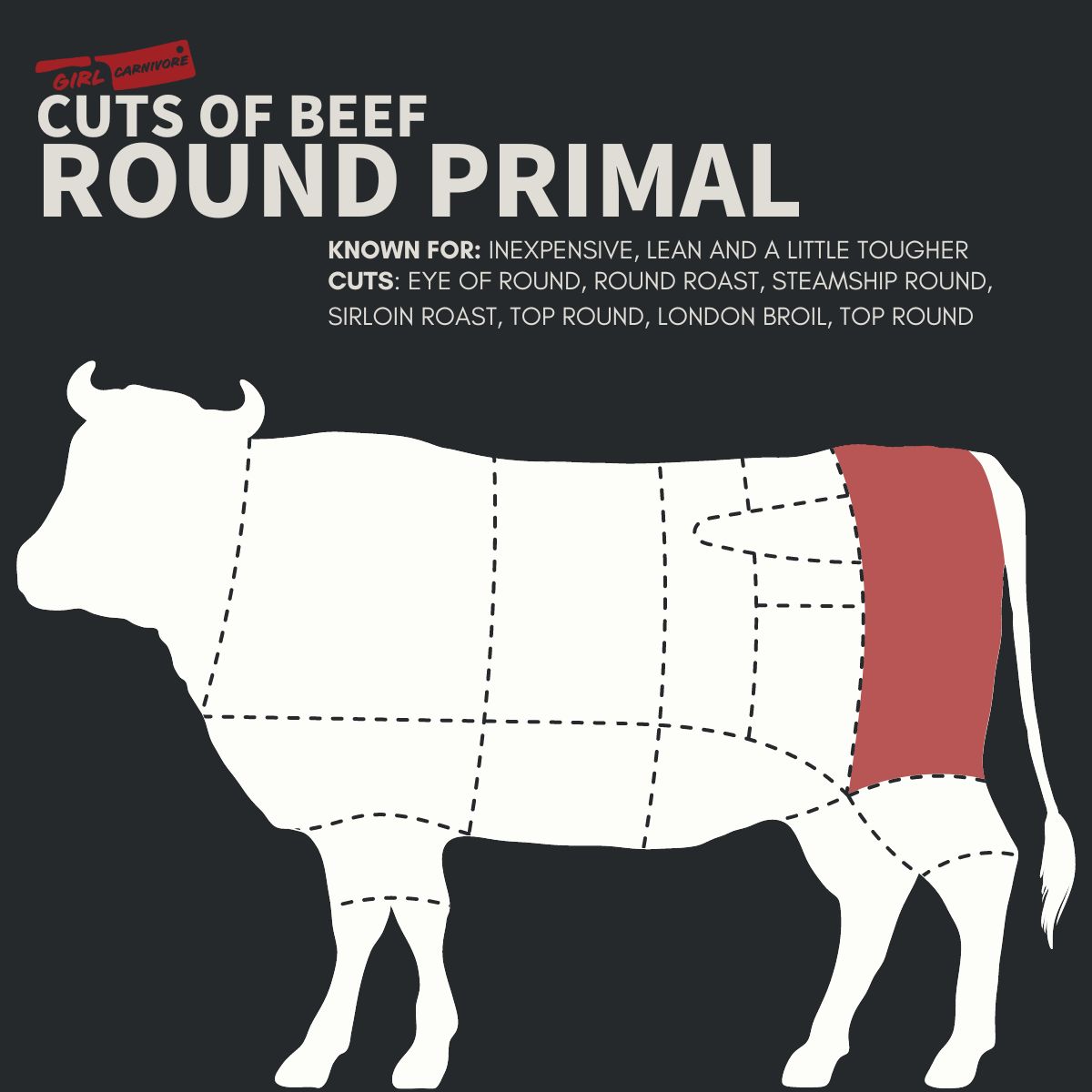
Round
- Location: The round comes from the hind legs of the cow, specifically the quadriceps muscle group. These powerful muscles are responsible for propulsion and during movement. As a result, the round is a lean muscle with less marbling compared to other cuts.
- Best for: The leanness of the round makes it a good candidate for roasting, slow cooking, or grinding. Round roasts benefit from slow cooking methods like pot roasting or braising to tenderize the lean muscle and prevent dryness. The round can also be ground into lean burger meat, perfect for those watching their fat intake. We love making smoked roast beef with this cut.
- Tips:
- Round steak can be a tricky cut if not cooked properly. Due to its leanness, it has a tendency to dry out.
- Marinades, brines, or slow cooking methods are highly recommended to help get a tender and flavorful meal.
- When using ground round for burgers, consider adding some fat, like olive oil or finely chopped bacon, to help retain moisture and prevent dryness.
Round Sub-primal Cuts
- Top Round: This large subprimal cut is a favorite for roasts or the thick budget-friendly, London Broil. Due to its leanness, it benefits from slow cooking methods like braising or pot roasting to achieve tenderness and prevent dryness.
- Eye of Round: A popular choice for health-conscious cooks, the eye of round is a lean and versatile cut. While it can be roasted whole, it’s more commonly sliced into steaks or thin cuts for stir-fries or quick marinades. Due to its leanness, marinating or tenderizing techniques are recommended for optimal results.
- Bottom Round: Similar to the top round but slightly smaller, the bottom round is another lean sub-primal cut ideal for roasts or stews. Slow cooking methods are essential for achieving tenderness.
Round Recipes
Beef Recipes
Roast Beef Sliders with Horseradish Sauce
Beef Recipes
Sous Vide Roast Beef
Beef Recipes
How to Grill London Broil
Beef Recipes
Shaved Hanging SteamShip round
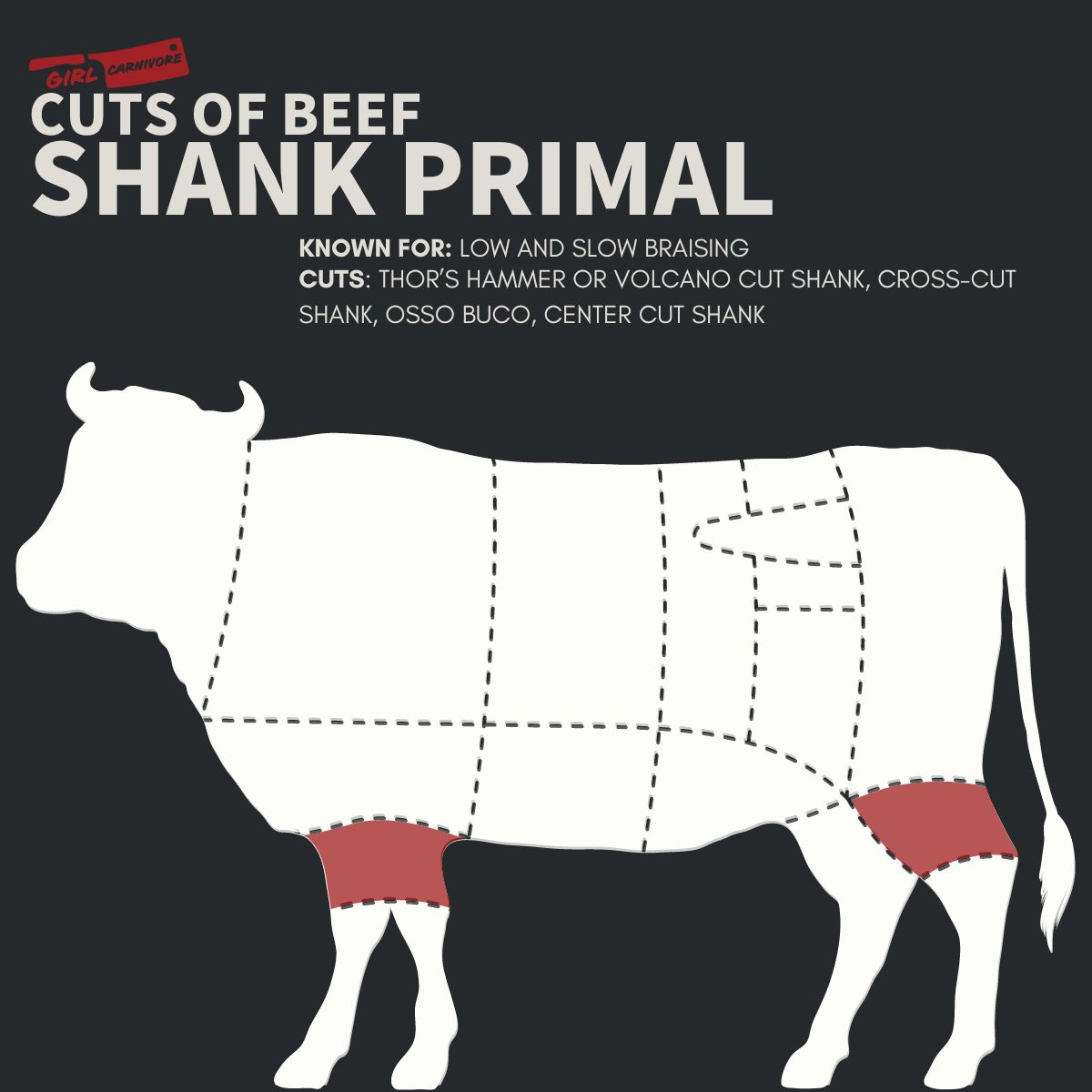
Shanks
- Location: Shanks come from the lower legs of the cow, encompassing the shin bone and surrounding muscles. These muscles are constantly working to support the weight of the animal and provide movement.
- Best for: Slow cooking methods are a must for shanks due to the high amount of connective tissue and bone marrow. Braising is the ideal technique, allowing the connective tissue to break down and transform into gelatin, while the bone marrow infuses the meat with rich, savory flavor. Shanks are a popular cut for osso buco, a classic Italian dish featuring braised veal shanks with vegetables, or for comforting soups and stews, like red wine braised beef shank.
- Tips:
- Shanks require long cooking times, typically several hours, to achieve the desired tenderness. The low and slow approach allows the connective tissue to melt completely, resulting in meat that literally falls off the bone.
- The rich bone marrow adds an extra layer of flavor to the dish.
- When selecting shanks, look for cuts with good marbling around the bone, as this adds additional flavor and keeps the meat moist during the long cooking process.
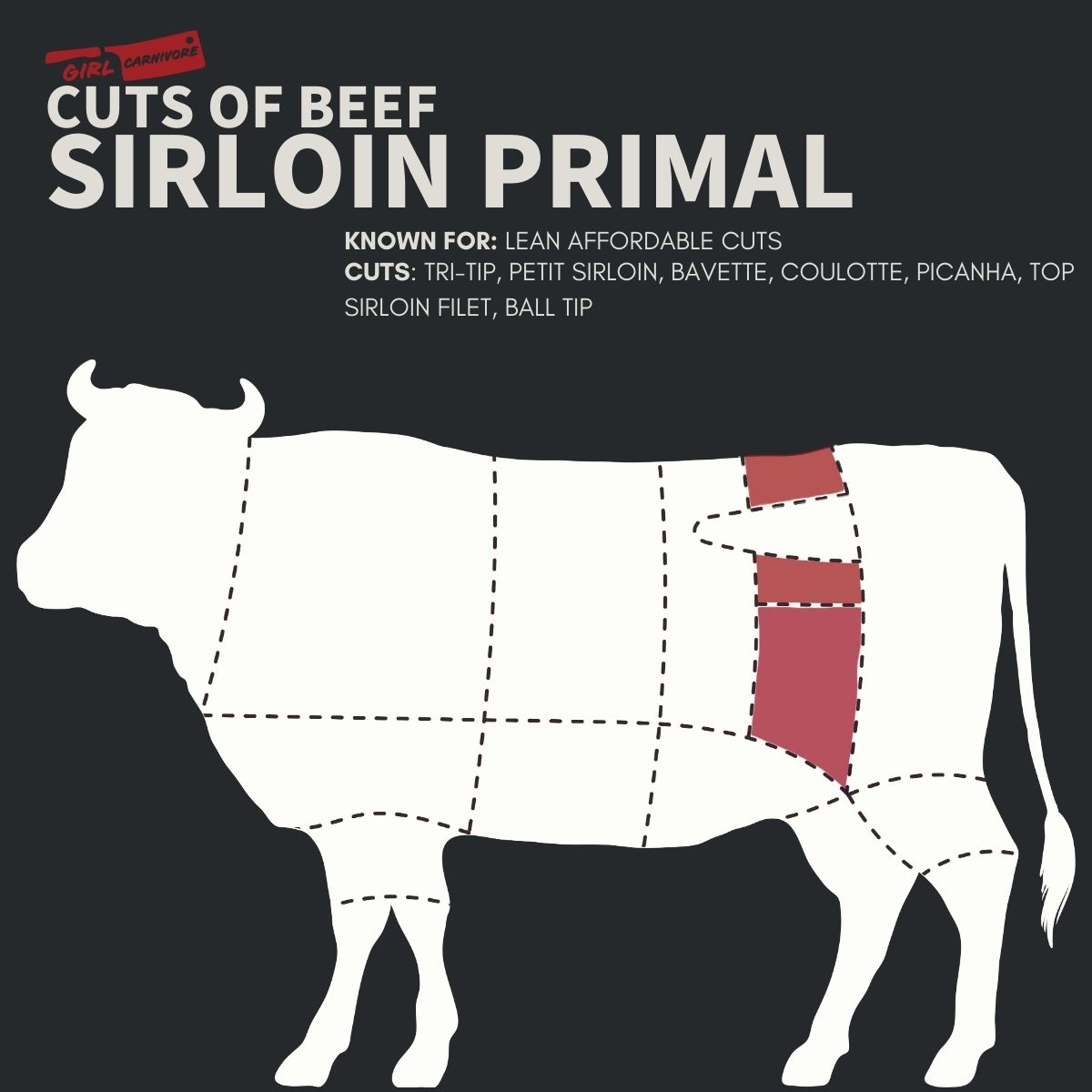
Sirloin
- Location: The sirloin primal is situated on the upper back of the cow, encompassing a range of muscles with varying degrees of tenderness and fat content. These muscles are responsible for some movement but not to the same extent as the heavily used muscles in the shoulder or hindquarters.
- Best for: Sirloin cuts are perfect for grilling, pan-searing, or roasting, offering a good balance between tenderness and flavor. This primal cut includes popular options like New York strip steak, sirloin tip roast, and tri-tip roast.
- Tips:
- Sirloin steaks are known for their versatility and ability to satisfy various preferences. New York strip offers a leaner option with a fantastic balance of tenderness and flavor, making it a crowd-pleasing steak choice. Tri-tip roast, on the other hand, boasts a more marbled interior, resulting in a richer flavor and juicier eating experience.
- Consider the specific cut within the sirloin primal for your desired fat content and tenderness level. New York strip is a great all-around choice, while tri-tip might be preferred for those looking to feed a lot of people.
Sirloin Sub-primal Cuts
- Top Sirloin: The king of grilling, this well-marbled cut boasts exceptional juiciness and intense beefy flavor. It’s further divided into a cut known as top sirloin steak, which is ideal for quick cooking methods, like grilled top sirloin steaks.
- Picanha: Picanha, a prized cut from the rump cap of the cow, is known for its juicy tenderness and intense beefy flavor. This cut is perfect for making rotisserie grilled picanha.
- Tri-Tip Roast: This triangular marvel offers a good balance of marbling and lean muscle. Perfect for roasting or slow cooking, it delivers rich flavor and can be enjoyed sliced or shredded.
- Sirloin Tip Roast/Steak: Leaner than top sirloin, this cut benefits from marinades or slow cooking methods to achieve tenderness. It’s a budget-friendly option for roasts or flavorful steaks. We love making pan seared tri tip steaks and grilled tri tip steaks with this cut.
- Sirloin Flap: This thin and flavorful cut is ideal for bavette steak tacos, stir-fries, or quick marinades and grilling due to its rapid cooking time and ability to absorb bold flavors.
- Bottom Sirloin: The bottom sirloin, often overlooked, is a budget-friendly cut with big flavor potential. Nestled in the rear of the cow, it offers a good balance of meat and connective tissue. While this can make it chewier if not cooked right, it also contributes to its rich beefy taste. Thicker cuts excel with slow cooking methods like braising or roasting, resulting in fall-apart goodness for tacos or stews. Thinner cuts like sirloin tip steaks shine with high-heat methods like grilling or pan-searing, delivering juicy results.
Sirloin Recipes
Beef Recipes
Smoked Tri-Tip
Beef Recipes
Pan-Seared Tri-Tip Steaks
Beef Recipes
Pan Seared Sirloin Steak
Beef Recipes
Bavette Steak Tacos
Ground Beef
- Location: Ground beef isn’t a specific cut but a combination of trimmings from various locations on the cow. Depending on the butcher or grocery store, the lean-to-fat ratio of ground beef can vary.
- Best for: Ground beef is super versatile. It can be transformed into countless dishes like burgers, smoked meatballs, bacon-wrapped smoked meatloaf, meat sauce, or even stuffed poblano peppers. The lean-to-fat ratio will affect the final product, so choose accordingly.
- Tips:
- Mix a leaner cut with fattier ones when making ground beef burger patties at home to get the right ratio for your preference. We prefer a 70/30 blend for juicy burgers.
- 80/20 offers a richer flavor and is perfect for dishes like bolognese sauce, where fat contributes to overall taste and texture.
- Explore the different lean-to-fat options to find what best suits your recipe and preferences.
Ground Beef Recipes
Beef Recipes
Garlic Butter Bacon Cheeseburger
Recipes With Pork
Bacon Wrapped Meatloaf
Beef Recipes
Homemade Polpette Recipe
Ground Beef
Griddle Burger
This guide has hopefully equipped you with the knowledge and confidence to navigate the world of beef cuts like a pro. So, the next time you stand at the butcher shop, you can make informed decisions and select the perfect cut for your favorite recipes!
